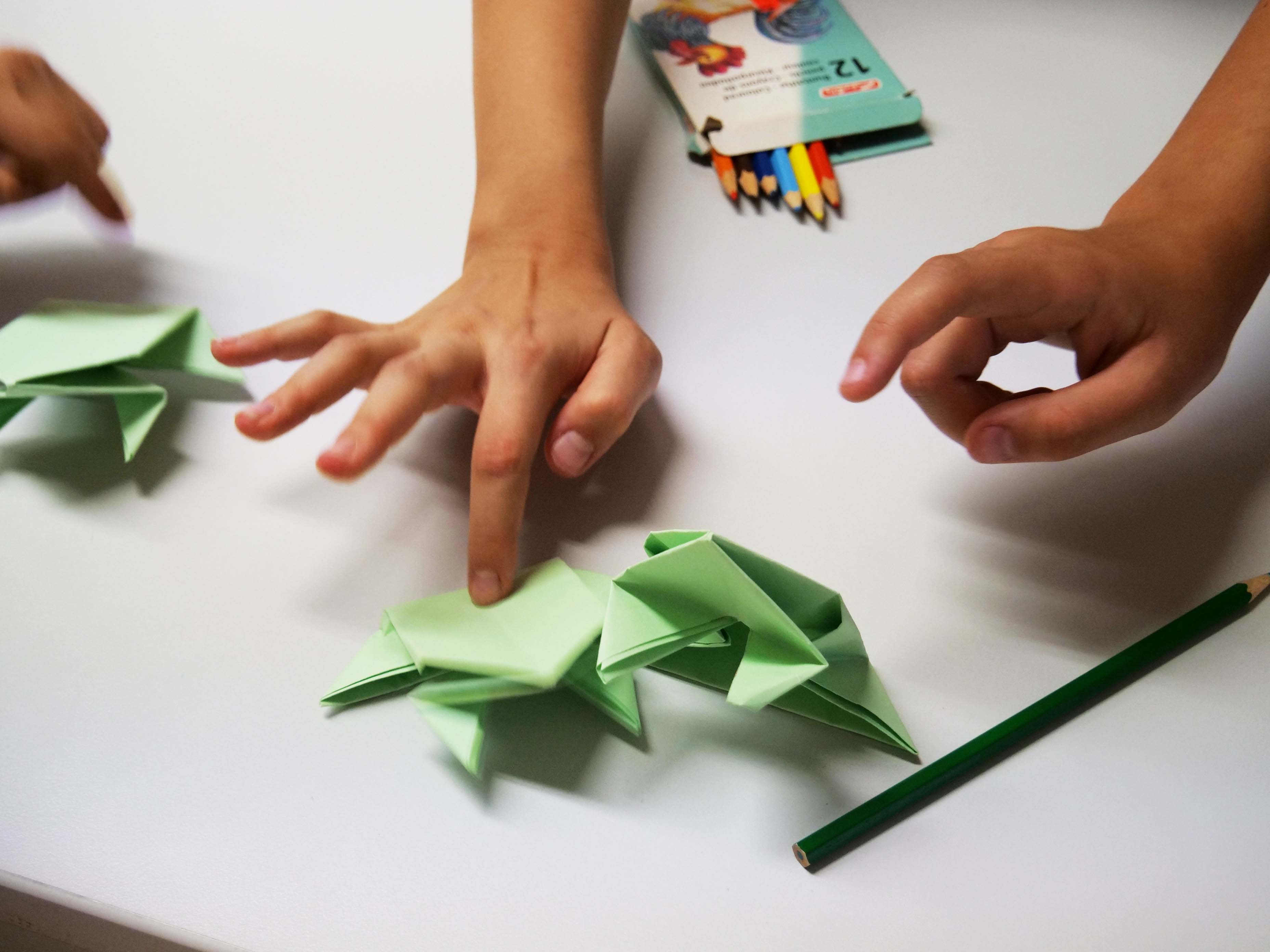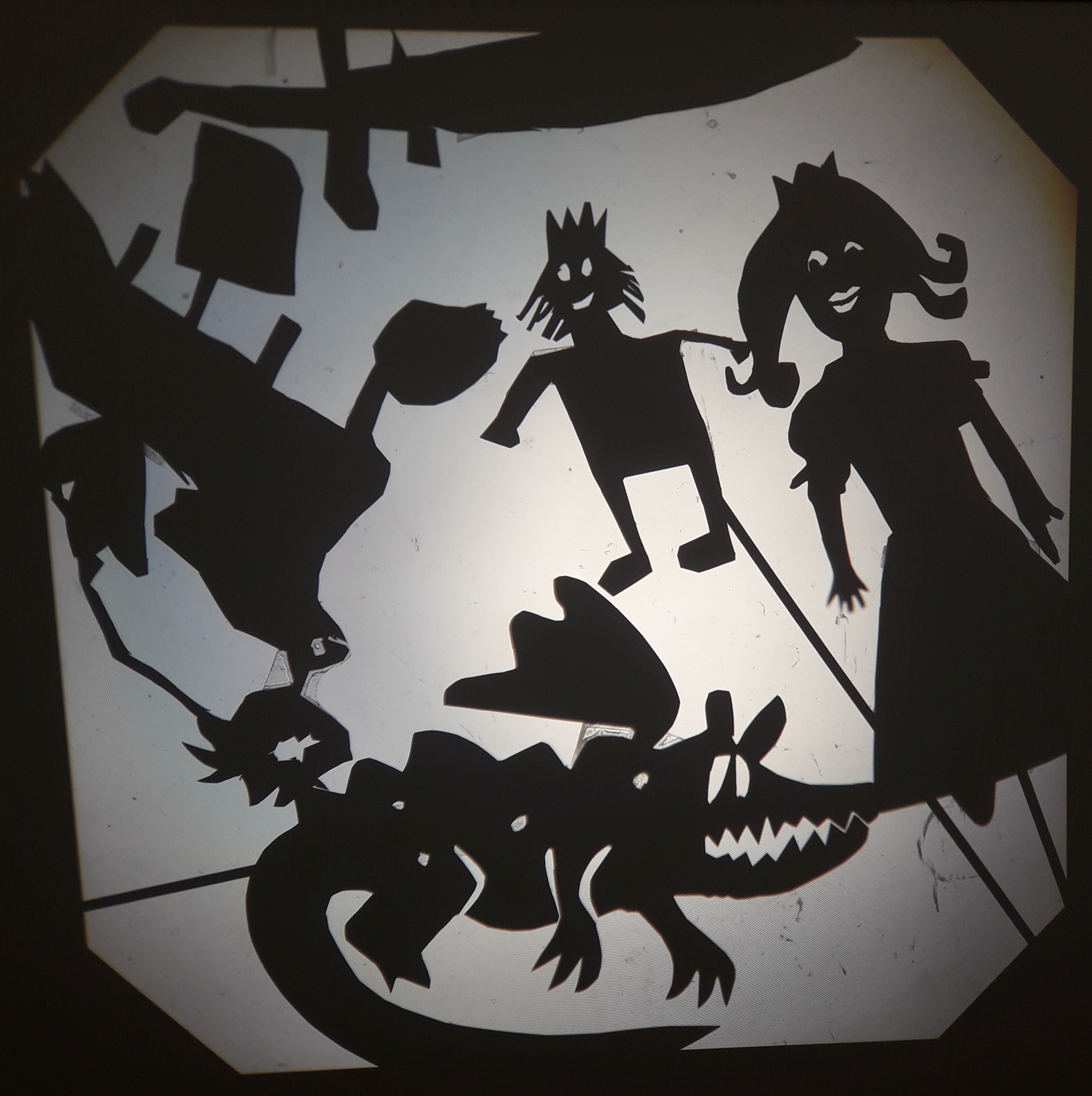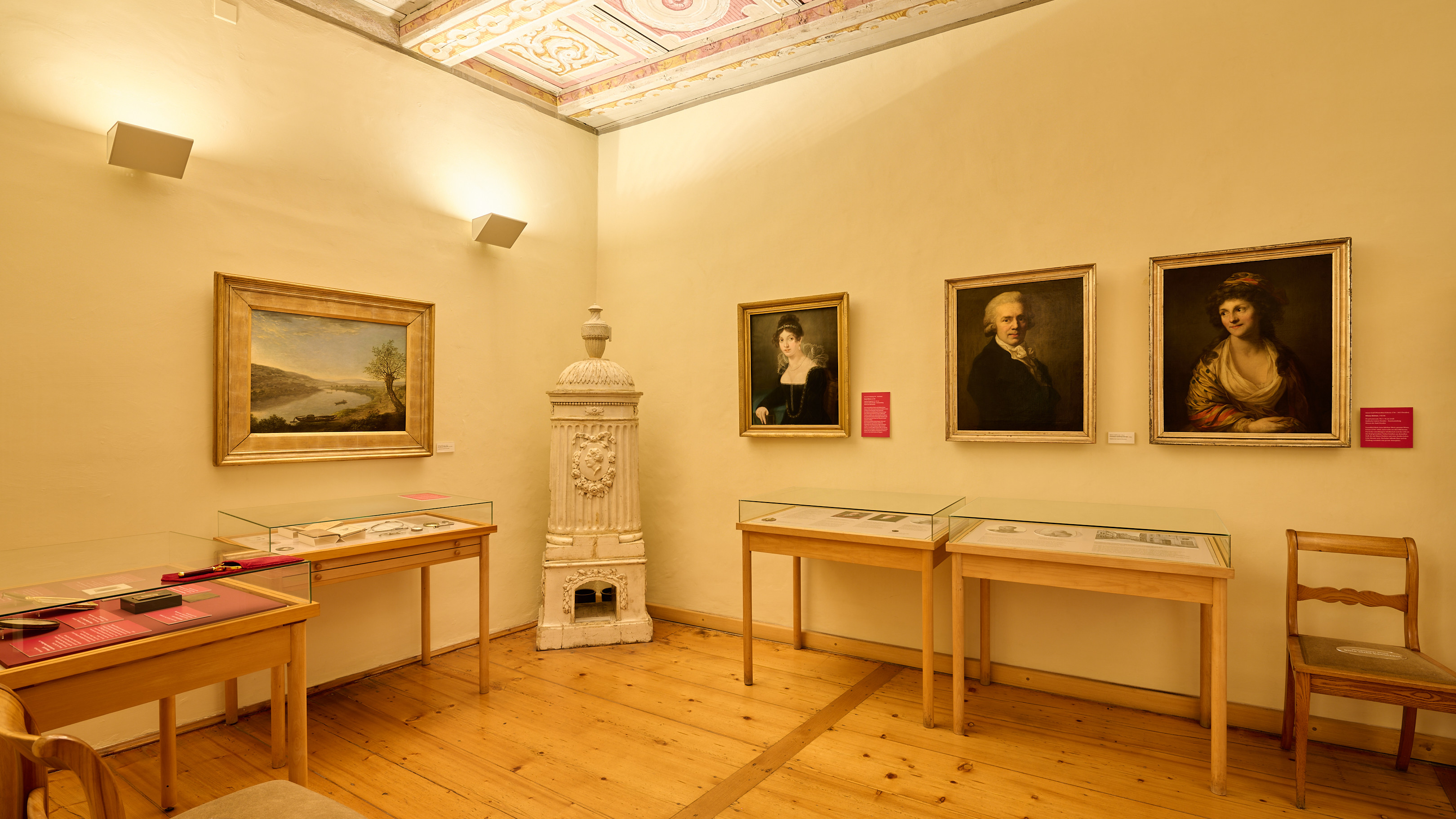Gerhard von Kügelgen (1772 – 1820) was one of the most important portrait painters of his time. Born in Bacharach on the Rhine, his study trips took him to Rome, Riga, Reval and St. Petersburg before he came to Dresden in 1805. In 1811 he became a member of the Dresden Academy of Art, where he taught history painting from 1814.
In 1808, Kügelgen and his family moved into the »Gottessegen« house in the heart of Dresden's baroque Neustadt district. He had his studio in the apartment and received his clients there. Kügelgen's studio, recreated from a contemporary painting by Georg Friedrich Kersting, and the richly painted wooden ceilings from the 17th century are special treasures in the preserved original rooms. Artists and art connoisseurs also met here. The family's circle of friends included Caspar David Friedrich, who was little known at the time and is probably the most important painter of German Romanticism today. Carl Maria von Weber and Johann Wolfgang von Goethe were among the famous guests at the time.
Some objects from the Körner Museum, which was destroyed in 1945, and a series of portraits by the painter Anton Graff are also worth a visit. They introduce the family and circle of friends of Christian Gottfried Körner, who entered literary history as a friend and patron of Friedrich Schiller.
Gerhard von Kügelgen fell victim to a robbery and murder on March 27, 1820 on his way from his vineyard house in Loschwitz to Dresden. The painter's son, Wilhelm von Kügelgen, recounts the family's life, many significant events and anecdotes in his book »Jugenderinnerungen eines alten Mannes« (Memories of an Old Man's Youth).


Exhibition offers

Of the Frog King and Iron Henry
Holiday offer for after-school groups
During a visit to the home of the Kügelgen family of painters, tutor Senff will immerse you in the world of fairy tales. Afterwards, we will make a little frog king - much more beautiful than in the fairy tale!

With paper, scissors & imagination
Holiday offer for after-school groups
The fairy tale writer Hans Christian Andersen is a guest at the Kügelgenhaus! We learn stories from his life, listen to fairy tales and try to cut figures out of paper with scissors, just like the poet once did.

Your birthday at the museum! Playtime at Kügelgens
Play your way back to other times! The Kügelgen family will show you how and with what children played in the Romantic era and you can design your own toy. If you like, bring your favourite cuddly toy with you.
100 € incl. museum admission (with Dresden Pass: 60 €), max. 2 accompanying adults
Please submit your booking enquiry using our form.
























